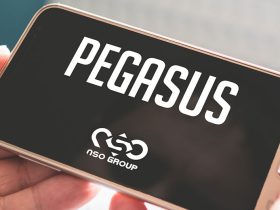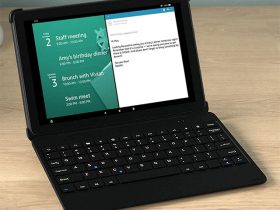As longtime readers know, whereas I attempt to keep educated on the various sub-disciplines of data know-how, my ardour is for info safety. Because it’s been some time since I’ve contributed any InfoSec knowhow, I wished to rectify that. I couldn’t have timed this realization higher, as a result of (as you’ll see) the strategies on show are good for shielding your deluge of tax season paperwork.
On this piece, I purpose to supply a spread of straightforward however efficient choices for encrypting a small variety of information. Particularly, these choices are salient to be used circumstances like tax submitting, the place customers are sending delicate paperwork to recipients with an unknown diploma of technical proficiency. Fond as I’m of PGP, I’ll guess you your refund verify that your accountant doesn’t know the very first thing about utilizing it.
Earlier than going additional, I’ll observe that every one of those file encryption strategies require you to make use of an extra channel for transmitting shared secrets and techniques, primarily passwords. The file will probably be despatched by one pre-agreed channel, whereas the technique of decrypting it will likely be despatched through one other.
There are too many viable auxiliary channels to enumerate, however simply just be sure you take cheap steps to select one which isn’t simply compromised. The truth that you’re utilizing an extra channel is itself safety in opposition to the file’s compromise: with out it, sending an encrypted file and its decryption password on the identical channel creates a single level of failure. Utilizing two channels requires two profitable assaults by your adversaries to fail.
Let’s begin on the lowest complexity (and safety) approach and go to the best. Some later entries are for the hardcore safety varieties, however there’s one thing for everybody.
Encrypted ZIP, CLI type
My life modified endlessly after I realized that I might encrypt ZIP archives. What makes ZIP encryption so helpful is the sheer ubiquity of ZIPs. Virtually each system can course of ZIPs, and all those who do can deal with the encryption.
The interface for decrypting them is breathtakingly easy: the consumer clicks on the ZIP, a window pops up prompting a password, the consumer enters the password, and the ZIP commences extraction (assuming the password is appropriate, after all). This makes ZIP encryption preferrred for transferring information to recipients whose technical competency can’t be ascertained.
There’s a graphical interface for zipping information, certain, however the command line interface (CLI) kicks the benefit and effectivity of the method into overdrive. You actually run the “zip” command with the “‐e” flag, the identify you need the archive to have, and a number of present information that you just need to encrypt and compress, all delimited by areas:
When you run the command, a immediate will ask you to enter and ensure a decryption password. Write it down as a result of that’s what you’ll have to share together with your recipient to open the ZIP. You’ll be able to shred/incinerate the paper later, simply write it down.
There are some technical factors price masking. First, the unique information will not be altered. The “zip” command mechanically compresses and encrypts copies. Second, the names of zipped information are readable when opening the archive even earlier than decryption. Subsequently, the encryption gained’t defend any delicate filenames in opposition to anybody who obtains the ZIP, password or no.
Assuming you’re okay with these caveats and have carried out the above steps, the final step is to ship your recipient the file and the password by separate means. An attacker wants each items, so make it as arduous for them to take action as fairly attainable.
OpenSSL: Not Only for Browsers Anymore
For individuals who need safety that’s a lower above the common-or-garden encrypted ZIP’s, you possibly can whip out OpenSSL. For Linux customers, their system places this in simple attain with the pre-installed “openssl” package deal. Like with encrypted zipping, you possibly can encrypt your file utilizing OpenSSL with a single command:
Let’s break that down.
- “aes‐256‐cbc” is the cipher getting used. Until you might have robust opinions about ciphers, use that one.
- The “‐a” flag encodes the output to base64, which is essential if we wish different applications to play properly with the encrypted output file. The choice is a binary file, which e mail companies and different applications flag as a safety threat (mockingly, on this case).
- The “‐salt” flag provides a random worth to the combo to lower the possibility that an attacker who is aware of one thing about your encryption practices can break it. “openssl” additionally warns you to by no means ever not use salt, so there’s that, too; and,
- As you sharp readers can intuit, “‐in” specifies the enter file and “‐out” units the goal output filename. You’ll be able to technically identify your output file no matter you need, right down to the file extension. Nevertheless, simply be certain to not identify it the identical because the enter file, or your output will overwrite your enter.
On operating the command, it’s going to ask for a password twice. Once more, document this someplace in order that someone can decrypt your file. Decryption is simply as simple. Simply maintain the salt and move the “‐d” flag for decryption. Clearly, this time the encrypted file is the enter, and a decrypted filename is the output:
Once more, you possibly can identify the output file no matter you need. Similar to with the encrypted ZIPs, you want an applicable secondary channel for transmitting the decryption password.
For Overachievers, There’s At all times PGP
Geared towards the true InfoSec nerds on the market who don’t thoughts additional work (and have pals who don’t, both), there’s PGP. These steps subsequently assume you and the file’s receiver know methods to work it. I gained’t get into these particulars right here, however happily for you, I already did beforehand.
To make use of PGP file encryption, the recipient must have a PGP keypair. Technically you don’t, simply to ship the file. However when you count on a file in return, securely, you’ll have to have a PGP keypair your self.
Not like with encrypted ZIPs and OpenSSL, the place the sender performs the encryption after which transmits the file and shared secret to the recipient; with PGP, the file recipient should ship the sender their public key earlier than any encryption can occur. If the sender desires to signal the file, they’ll want their very own keypair to allow them to give the recipient their public key.
Intricate as this dance is, there’s one large benefit: its uneven key construction makes exchanging keys method safer, since attackers can’t break your encryption from the general public key. This affords you flexibility in your key change. You can each add your public keys to a key server and name it a day.
Should you’d choose if the entire world didn’t know you might have PGP keys, you possibly can commerce public keys over one other encrypted platform. In fact, when you actually don’t need your public keys touching the web, you possibly can change them in particular person. Then once more, when you might do this, then why not simply change your file at that time?
With all that out of the way in which, it’s time to really encrypt. There’s a stream of flags to decipher right here:
- The “‐o” flag and its related “outfile” specify the filename of the completed product. Identify it nevertheless you need, however I counsel together with a suffix to remind you it’s encrypted.
- The “‐e” flag directs GPG to do an encrypt operation.
- The “‐a” flag makes GPG encode the encrypted output in base64, simply as that flag does in “openssl”.
- “‐r” and its “recipient” decide whose public key will get used. That is essential as a result of PGP makes use of a public key at any time when it encrypts, and solely the holder of the general public key’s sibling personal key can decrypt that encryption. Specify the recipient by their public key’s related e mail tackle. Lastly, you need to level to the file to be encrypted.
The decryption command is way easier:
The recipient passes the “‐d” flag for decryption, chooses what to name the output, and units the enter. That’s it.
Between these three strategies, you might have all the things you want for hours of cryptographic enjoyable…and sound sleep figuring out your information are protected. Completely satisfied ciphering!
,







